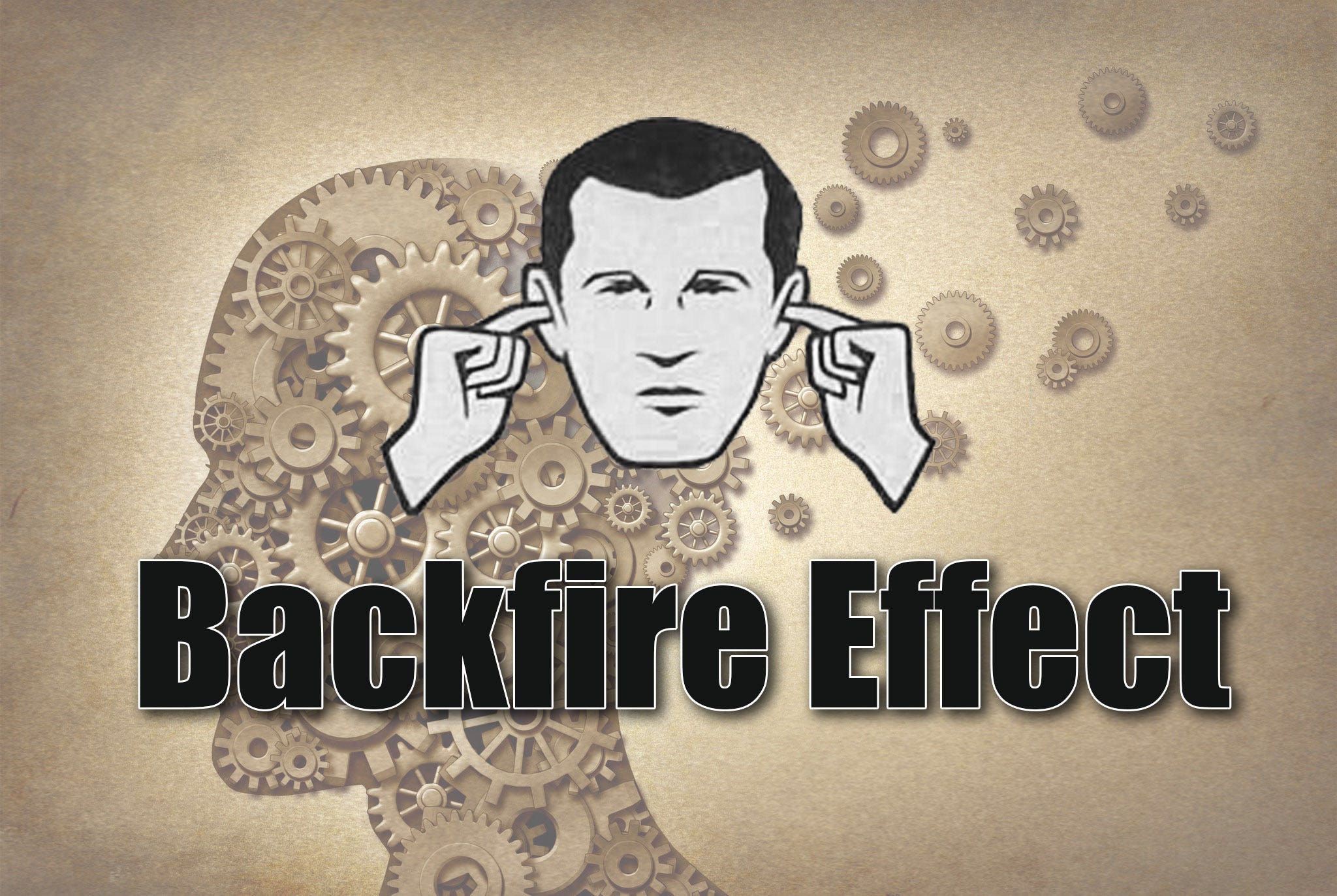The Backfire Effect: When Facts Make You Believe Even More
The Backfire Effect is a cognitive bias that occurs when an individual’s preexisting beliefs or convictions become even more entrenched when presented with contradictory information. In other words, when people are confronted with facts that challenge their deeply held views, they may react by rejecting the new information and reinforcing their original beliefs, regardless of the evidence.
Examples of the Backfire Effect:
Political Beliefs: Imagine someone who strongly supports a particular political candidate. When presented with evidence of that candidate’s misconduct or policy failures, rather than reconsidering their support, they might double down on their loyalty, arguing that the evidence is fabricated or biased.
Conspiracy Theories: Individuals who believe in conspiracy theories, such as those related to moon landings or 9/11, often display the Backfire Effect. When presented with scientific evidence refuting their claims, they may respond by becoming more convinced that the evidence is part of a larger conspiracy.
Vaccination Skepticism: Parents who hold anti-vaccine beliefs may, when presented with scientific studies demonstrating the safety and efficacy of vaccines, become more resolute in their opposition, believing that such studies are influenced by pharmaceutical companies or other vested interests.
The Backfire Effect in Action:
Let’s consider a real-world scenario involving the Backfire Effect. Suppose there is a heated debate about climate change. One person, deeply skeptical of the concept, encounters a detailed scientific report on climate change supported by overwhelming evidence. Instead of revising their views in light of the new information, the individual might reject the report as “fake news” or question the credibility of the scientists involved, thus reinforcing their initial skepticism.
Solutions to Mitigate the Backfire Effect:
Empathetic Listening: When engaging in discussions with someone exhibiting the Backfire Effect, it’s essential to practice empathetic listening. Avoid attacking their beliefs and be open to their perspective. This can create a more receptive atmosphere for a constructive conversation.
Avoid Confrontation: Approaching individuals with contradictory information in a non-confrontational manner can reduce the likelihood of the Backfire Effect. Instead of presenting facts as an attack on their beliefs, frame it as a chance for mutual learning.
Provide Diverse Sources: Encourage individuals to seek information from diverse sources. Exposure to different viewpoints can help combat the Backfire Effect by allowing them to see a broader spectrum of opinions.
Encourage Critical Thinking: Promote critical thinking skills and the ability to evaluate evidence. Encourage individuals to question their own beliefs and explore the validity of their convictions.
In conclusion, the Backfire Effect is a cognitive bias that can lead people to become more entrenched in their beliefs when confronted with contradictory information. While it’s a challenging bias to overcome, employing empathetic listening, avoiding confrontation, diversifying information sources, and encouraging critical thinking can help mitigate its impact. It’s crucial to recognize that the Backfire Effect is a common human response, and addressing it effectively requires patience and understanding.
